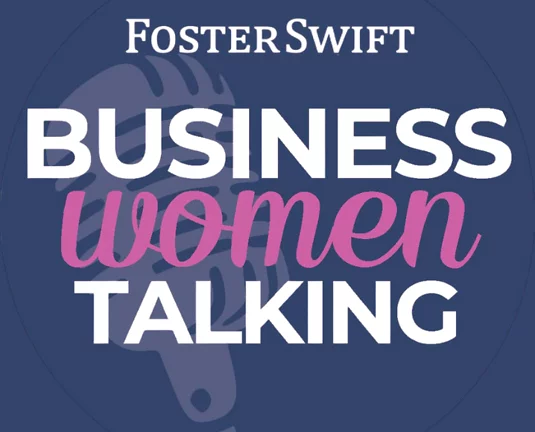Compliance and Regulation Issues of the Family Medical Leave Act: A 2023 Update
 Enacted by Congress in 1993, the Family Medical Leave Act (FMLA), provides up to 12-26 weeks of unpaid leave for approved reasons in any 12-month period. The law was created to balance the demands of the workforce with the needs of families, to promote the stability and economic security of families and to promote the goal of equal opportunity employment for men and women. According to the Department of Labor (DOL), approximately 15 million U.S. workers a year take FMLA-related leaves.
Enacted by Congress in 1993, the Family Medical Leave Act (FMLA), provides up to 12-26 weeks of unpaid leave for approved reasons in any 12-month period. The law was created to balance the demands of the workforce with the needs of families, to promote the stability and economic security of families and to promote the goal of equal opportunity employment for men and women. According to the Department of Labor (DOL), approximately 15 million U.S. workers a year take FMLA-related leaves.
Which Employers and Employees are Eligible for FMLA?
The FMLA applies to private sector employers with 50 or more employees on payroll in 20 or more work weeks in the current or preceding calendar year. In addition, the FMLA includes all public agencies and all elementary and secondary schools.
Under the FMLA, employees are covered if they have been employed for 12 months or have worked 1,250 hours in the last 12 months at a location with at least 50 employees within a 75-mile radius or work for a company covered by the FMLA.
FMLA Coverage and Benefits
Eligible employees can take up to 12 weeks of unpaid leave in any 12-month period. Among the most common situations covered by the FMLA are:
- Birth of a child.
- Adoption of a child.
- Placement of a child into foster care.
- Serious illness of a family member.
- A qualifying exigency or urgent need relating to active military duty, National Guard or Reserves.
Scheduling and Duration of FMLA Leaves
The FMLA provides eligible workers in Michigan with up to 12 weeks of leave in a 12-month period. Employees can also take up to 26 weeks of leave in a 12-month period to provide care for an injured family member hurt during active military service.
Leave for serious medical conditions can be taken in blocks of time over the course of a 12-month period which can be defined as:
- The calendar year.
- Any fixed 12-month “leave year”.
- The 12-month period beginning with date of employee’s first FMLA leave.
- A rolling 12-month period measured backward from date an employee uses any FMLA leave time.
Job Protection and Continuation of Benefits Under FMLA
In addition to the availability of 12 weeks of leave, the FMLA entitles employees who are returning from leave to be returned to the same position and pay or one of equal responsibility and pay.
Also, the group health insurance benefits for employees on FMLA leave are to be continued at the same level and terms. However, employees on FMLA furloughs can be required to pay their portion of the premium on their group health care coverage. Under the law, employee health care coverage can be cancelled if premium payments are 30 days late or if the employee fails to return from leave.
FMLA doesn’t require that accrual of seniority or other benefits be continued while employees are on leave.
Mental Health and FMLA
Last year the U.S. Department of Labor published new guidance which explains the circumstances when an eligible employee may utilize FMLA leave in connection with a mental health issue. It should be clear that no new regulations of requirements have been added to the FMLA, the guidance was meant to give employers greater insight as it relates to providing job-protected leave for workers with serious mental health conditions.
According to the FMLA, a serious mental health condition includes:
- A situation that requires in-patient care such as an overnight stay in a hospital, other medical care facility or treatment center for addictions and eating disorders.
- A condition that incapacitates an individual for more than three consecutive days and requires ongoing medical treatment, either multiple appointments with a health care provider or a single appointment and follow-up care.
- A condition that causes an individual to become incapacitated, requiring a heath care provider at least twice a year.
The specific mental health conditions that could qualify for leave under the FMLA may include major depressive disorder; bipolar disorder; post-traumatic stress disorder; obsessive compulsive disorder; and schizophrenia.
The FMLA also enables eligible employees to take leave for the purpose of providing psychological comfort and reassurance to a family member with a serious mental condition and receiving in-patient or home care.
This provision of the Act is generally limited to providing care for children under the age of 18, but the recent DOL guidance notes that leave can be extended to care for children over 18 if the individual needs care due to a serious mental health condition and is incapable of self-care as a result of the mental or physical disability.
Medical Certification of Serious Health Condition
The FMLA provides that an employer may require an employee seeking leave to submit a medical certification issued by the employer’s health care provider.
Employers must give employees at least 15 days to provide the certification. The information provided will support the employee’s need for FMLA leave, but the reporting of a diagnosis is not required.
Employers may request a second opinion if there is reason to doubt the validity of a health care provider’s certification. Under the FMLA, employers have seven days to cure any deficiencies in the medical certification and may deny leave if the certificate is not corrected. The Act also provides employers with the option to ask employees on leave to provide a fitness-for-duty certification clearing them for return to work.
Contacting Employee Health Care Providers
If necessary, employers may contact an employee’s health care provider to further authenticate and clarify a medical certification. Any contact with employee health care providers should not be made by the employee direct supervisor, but rather through a human resource professional or other management official.
Employee Notification for FMLA Leave
Employees must provide notice at least 30 days in advance if their need for FMLA leave is foreseeable. (For example, elective, non-emergency surgery.) At the employer’s request, an employee who doesn’t provide 30 days’ notice can be asked to explain why such notice was not practicable.
Under the FMLA, if an employee fails to comply with their employer’s customary call-in procedures, any FMLA-related leave may be denied or delayed, and the employee may be disciplined under existing workplace policies. Calling-in-sick without providing more information is not sufficient notice to trigger FMLA protections.
It is an employee’s duty to inquire further and gather additional information relating to the request for FMLA leave.
Conclusion
The requirements of providing employees with leave for medical conditions and to care for family members have been well established over time. The FMLA has continued to evolve over the past 25 years and coverage has been expanded and amended to cover many additional employee groups not included in the original law.
If faced with a request for leave under the FMLA and if in doubt, DON'T WAIT! Employers should ensure they are prepared to navigate the compliance issues associated with such a request. Always consult with your Foster Swift employment counsel regarding how to proceed.




